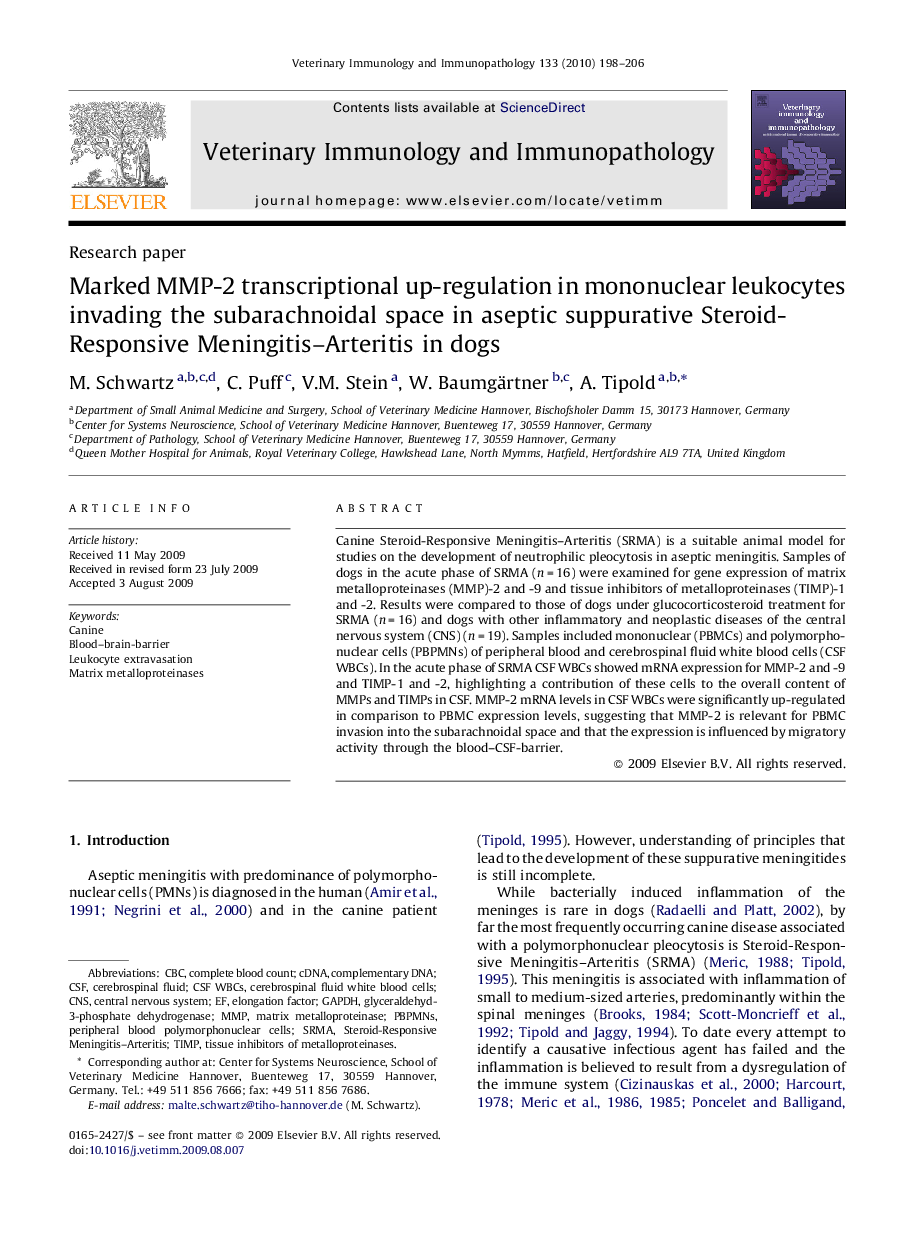| کد مقاله | کد نشریه | سال انتشار | مقاله انگلیسی | نسخه تمام متن |
|---|---|---|---|---|
| 2462494 | 1555082 | 2010 | 9 صفحه PDF | دانلود رایگان |

Canine Steroid-Responsive Meningitis–Arteritis (SRMA) is a suitable animal model for studies on the development of neutrophilic pleocytosis in aseptic meningitis. Samples of dogs in the acute phase of SRMA (n = 16) were examined for gene expression of matrix metalloproteinases (MMP)-2 and -9 and tissue inhibitors of metalloproteinases (TIMP)-1 and -2. Results were compared to those of dogs under glucocorticosteroid treatment for SRMA (n = 16) and dogs with other inflammatory and neoplastic diseases of the central nervous system (CNS) (n = 19). Samples included mononuclear (PBMCs) and polymorphonuclear cells (PBPMNs) of peripheral blood and cerebrospinal fluid white blood cells (CSF WBCs). In the acute phase of SRMA CSF WBCs showed mRNA expression for MMP-2 and -9 and TIMP-1 and -2, highlighting a contribution of these cells to the overall content of MMPs and TIMPs in CSF. MMP-2 mRNA levels in CSF WBCs were significantly up-regulated in comparison to PBMC expression levels, suggesting that MMP-2 is relevant for PBMC invasion into the subarachnoidal space and that the expression is influenced by migratory activity through the blood–CSF-barrier.
Journal: Veterinary Immunology and Immunopathology - Volume 133, Issues 2–4, 15 February 2010, Pages 198–206